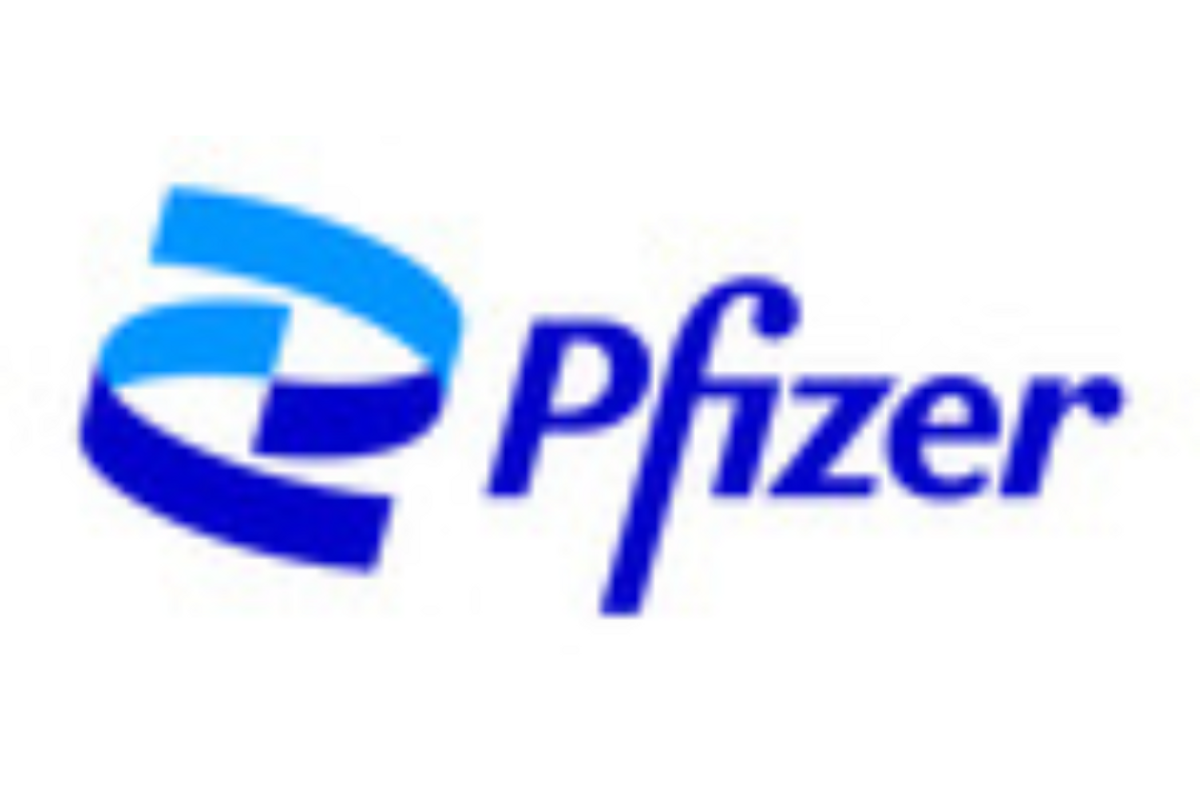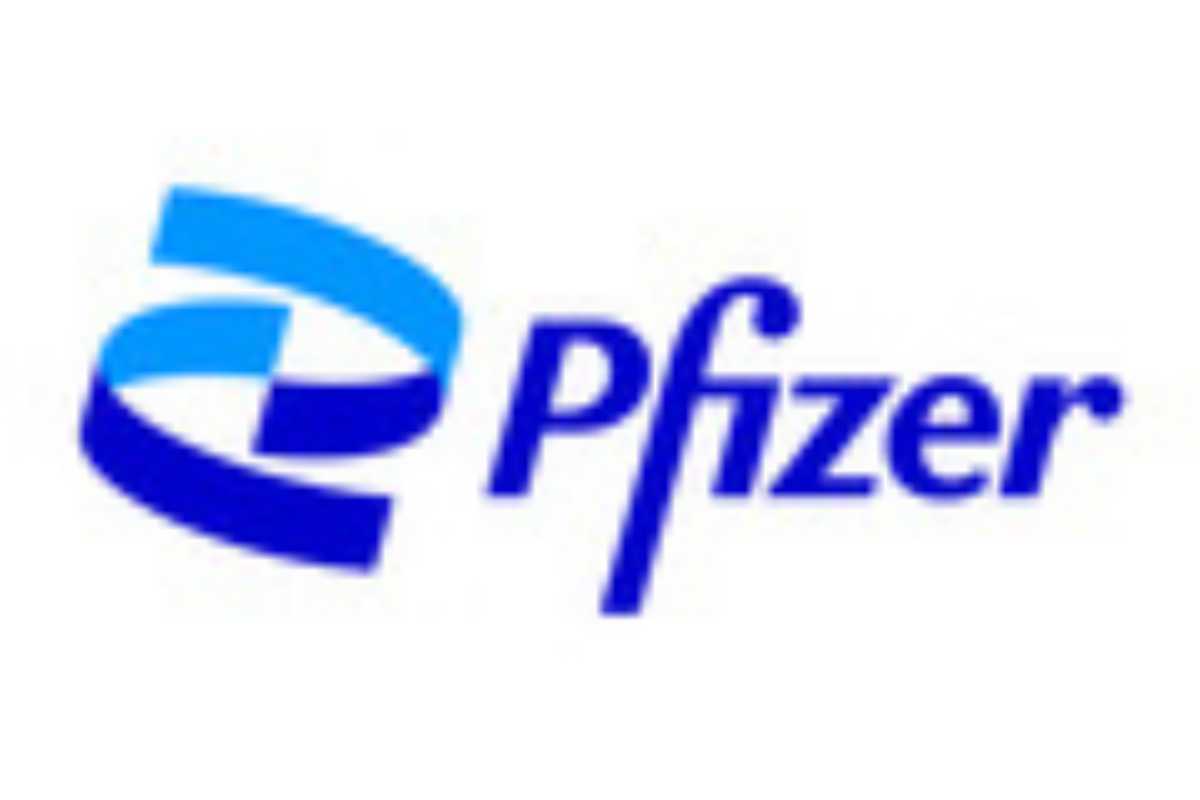If approved, the vaccine w ould provide the broadest serotype coverage of any pneumococcal conjugate vaccine in infants and children, and have the potential to help protect against more of the clinically significant remaining burden of disease
Pfizer Inc. (NYSE:PFE) today announced that the U.S. Food and Drug Administration (FDA) accepted for priority review a supplemental Biologics License Application (sBLA) for its 20-valent pneumococcal conjugate vaccine candidate (20vPnC) for the prevention of invasive pneumococcal disease (IPD) caused by the 20 Streptococcus pneumoniae (pneumococcus) serotypes contained in the vaccine in infants and children 6 weeks through 17 years of age, and for the prevention of otitis media caused by seven of the 20 Streptococcus pneumoniae serotypes contained in the vaccine.
Priority Review designation by the FDA reduces the standard sBLA review period by four months. The Prescription Drug User Fee Act (PDUFA) goal date for a decision by the FDA on the 20vPnC vaccine application is anticipated in April 2023. The FDA previously granted Pfizer's 20vPnC Fast Track Designation in May 2017 and Breakthrough Therapy Designation in August 2020 for the pediatric indication for IPD.
"Today's regulatory milestone further advances Pfizer's commitment to the more than 20-year legacy of helping protect infants and children from invasive pneumococcal disease through conjugate vaccination," said Annaliesa Anderson, Ph.D., Senior Vice President and Chief Scientific Officer, Vaccine Research and Development, Pfizer. "By offering the broadest serotype coverage by a pneumococcal conjugate vaccine against important serotypes causing pneumococcal disease in U.S. infants and children, 20vPnc, if approved, can help expand the protection for this vulnerable pediatric population."
The regulatory submission is supported by results from the Phase 3 and Phase 2 clinical trial programs for the pediatric indication for 20vPnC. Three core Phase 3 pediatric studies contributed to data on the safety, tolerability, and immunogenicity of 20vPnC, including previously announced positive, top-line results of the pivotal U.S. Phase 3 study (NCT04382326). These studies collectively enrolled approximately 3,500 infants and 800 children of all ages. Further data from a Proof-of-Concept Phase 2 study (NCT03512288) in 460 U.S. infants that assessed the safety and immunogenicity of 20vPnC, with previously announced positive results, also supported the regulatory submission.
About 20vPnC
Pfizer's 20vPnC pediatric vaccine candidate includes the 13 serotypes already included in Prevnar 13 ® – 1, 3, 4, 5, 6A, 6B, 7F, 9V, 14, 18C, 19A, 19F, and 23F. The seven new serotypes included in 20vPnC are global causes of IPD. 1,2,3,4,5 and are associated with high case-fatality rates 6,7,8,9 antibiotic resistance 10,11 and or meningitis. 12,13 Together, the 20 serotypes included in 20vPnC are responsible for the majority of currently circulating pneumococcal disease in the U.S. and globally. 14,15,16,17,18,19,20
The supplemental Biologics License Application (sBLA) for 20vPnC includes for review indications in the following pediatric populations:
- The prevention of invasive disease caused by Streptococcus pneumoniae serotypes 1, 3, 4, 5, 6A, 6B, 7F, 8, 9V, 10A, 11A, 12F, 14, 15B, 18C, 19A, 19F, 22F, 23F, and 33F in infants and children 6 weeks through 17 years of age.
- The prevention of otitis media caused by Streptococcus pneumoniae serotypes 4, 6B, 9V, 14, 18C, 19F, and 23F in infants and children 6 weeks through 5 years of age.
In September 2022, Pfizer announced positive top-line results from its pivotal Phase 3 study (NCT04546425) in infants in the European Union, and in November 2022, submitted the 20vPnC pediatric indication to the European Medicines Agency (EMA).
The FDA previously approved PREVNAR 20 ® (Pneumococcal 20-valent Conjugate Vaccine) on June 8, 2021, for the prevention of invasive disease and pneumonia caused by the 20 pneumococcus serotypes in the vaccine in adults ages 18 years and older.
INDICATIONS FOR PREVNAR 13 ®
- Prevnar 13 ® is approved for children 6 weeks through 17 years of age (prior to the 18th birthday) for the prevention of invasive disease caused by the 13 strains of S. pneumoniae in the vaccine, and for children 6 weeks through 5 years (prior to the 6th birthday) for the prevention of ear infections caused by 7 of the 13 strains in the vaccine
- Prevnar 13 ® is not 100% effective and will only help protect against the 13 strains in the vaccine
IMPORTANT SAFETY INFORMATION
- Prevnar 13 ® should not be given to anyone with a history of severe allergic reaction to any component of Prevnar 13 ® or any diphtheria toxoid–containing vaccine
- Children and adults with weakened immune systems (e.g., HIV infection, leukemia) may have a reduced immune response
- In adults, the most common side effects were pain, redness, and swelling at the injection site, limitation of arm movement, fatigue, headache, muscle pain, joint pain, decreased appetite, vomiting, fever, chills, and rash
- A temporary pause of breathing following vaccination has been observed in some infants born prematurely
- The most commonly reported serious adverse events in infants and toddlers were bronchiolitis (an infection of the lungs) (0.9%), gastroenteritis (inflammation of the stomach and small intestine) (0.9%), and pneumonia (0.9%)
- In children 6 weeks through 17 years, the most common side effects were tenderness, redness, or swelling at the injection site, irritability, decreased appetite, decreased or increased sleep, and fever
- Ask your healthcare provider about the risks and benefits of Prevnar 13 ® . Only a healthcare provider can decide if Prevnar 13 ® is right for you or your child
INDICATIONS FOR PREVNAR 20 ®
- PREVNAR 20 ® is a vaccine indicated for active immunization for the prevention of pneumonia and invasive disease caused by Streptococcus pneumoniae serotypes 1, 3, 4, 5, 6A, 6B, 7F, 8, 9V, 10A, 11A, 12F, 14, 15B, 18C, 19A, 19F, 22F, 23F, and 33F in adults 18 years of age and older
- The indication for preventing pneumonia caused by S. pneumoniae serotypes 8, 10A, 11A, 12F, 15B, 22F, and 33F is approved based on immune responses. Continued approval may depend on a supportive study.
IMPORTANT SAFETY INFORMATION
- PREVNAR 20 ® should not be given to anyone with a history of severe allergic reaction to any component of PREVNAR 20 ® or to diphtheria toxoid
- Adults with weakened immune systems may have a lower response to PREVNAR 20 ® . Safety data are not available for these groups. Your healthcare provider can tell you if PREVNAR 20 ® is right for you
- In adults 18 years of age and older, the most common side effects were pain at the injection site, muscle pain, fatigue, headache, and joint pain. Additionally, injection site swelling was also common in adults 18 through 59 years of age
- Ask your healthcare provider about the risks and benefits of PREVNAR 20 ® . Only a healthcare provider can decide if PREVNAR 20 ® is right for you
About Pfizer: Breakthroughs That Change Patients' Lives
At Pfizer, we apply science and our global resources to bring therapies to people that extend and significantly improve their lives. We strive to set the standard for quality, safety and value in the discovery, development and manufacture of health care products, including innovative medicines and vaccines. Every day, Pfizer colleagues work across developed and emerging markets to advance wellness, prevention, treatments and cures that challenge the most feared diseases of our time. Consistent with our responsibility as one of the world's premier innovative biopharmaceutical companies, we collaborate with health care providers, governments and local communities to support and expand access to reliable, affordable health care around the world. For more than 170 years, we have worked to make a difference for all who rely on us. We routinely post information that may be important to investors on our website at www.Pfizer.com . In addition, to learn more, please visit us on www.Pfizer.com and follow us on Twitter at @Pfizer and @Pfizer News , LinkedIn , YouTube and like us on Facebook at Facebook.com/Pfizer .
Disclosure Notice
The information contained in this release is as of January 6, 2023 . Pfizer assumes no obligation to update forward-looking statements contained in this release as the result of new information or future events or developments.
This release contains forward-looking information about Pfizer's 20vPnC vaccine candidate, including its potential benefits, an sBLA pending with the FDA and an application submitted to the EMA for a pediatric indication, that involves substantial risks and uncertainties that could cause actual results to differ materially from those expressed or implied by such statements. Risks and uncertainties include, among other things, the uncertainties inherent in research and development, including the ability to meet anticipated clinical endpoints, commencement and/or completion dates for our clinical trials, regulatory submission dates, regulatory approval dates and/or launch dates, as well as the possibility of unfavorable new clinical data and further analyses of existing clinical data; the risk that clinical trial data are subject to differing interpretations and assessments by regulatory authorities; whether regulatory authorities will be satisfied with the design of and results from our clinical studies; whether and when any biologic license applications may be filed in particular jurisdictions for 20vPnC for any potential indications; whether and when the sBLA pending with FDA, the application submitted to the EMA and any such other applications may be approved by regulatory authorities, which will depend on a myriad factors, including making a determination as to whether the product's benefits outweigh its known risks and determination of the product's efficacy and, if approved, whether such product candidate will be commercially successful; decisions by regulatory authorities impacting labeling, manufacturing processes, safety and/or other matters that could affect the availability or commercial potential of 20vPnC; uncertainties regarding the ability to obtain recommendations from vaccine advisory or technical committees and other public health authorities regarding 20vPnC and uncertainties regarding the commercial impact of any such recommendations; uncertainties regarding the impact of COVID-19 on Pfizer's business, operations and financial results; and competitive developments.
A further description of risks and uncertainties can be found in Pfizer's Annual Report on Form 10-K for the fiscal year ended December 31, 2021 and in its subsequent reports on Form 10-Q, including in the sections thereof captioned "Risk Factors" and "Forward-Looking Information and Factors That May Affect Future Results," as well as in its subsequent reports on Form 8-K, all of which are filed with the U.S. Securities and Exchange Commission and available at www.sec.gov and www.pfizer.com .
___________________________________________________
1 Baisells E, Guillot L, Nair H, et al. Serotype distribution of Streptococcus pneumoniae causing invasive disease in children in the post-PCV era: A systematic review and meta-analysis. PlosOne. 2017;12(5): e0177113.
2 Hausdorff W & Hanage W. Interim results of an ecological experiment – Conjugate Vaccination against the pneumococcus and serotype replacement. Hum Vaccin Immunother. 2016;12(2):358-374.
3 Cohen R, Cohen J, Chalumeau M, et al. Impact of pneumococcal conjugate vaccines for children in high- and non-high income countries. Expert Rev Vaccines. 2017;16(6):625-640.
4 Moore M, Link-Gelles R, Schaffner W, et al. Effect of use of 13-valent pneumococcal conjugate vaccine in children on invasive pneumococcal disease in children and adults in the USA: analysis of multisite, population-based surveillance.Lancet Infect Dis. 2015;15(3):301-309.
5 Metcalf B, Gertz RE, Gladstone RA, et al. Strain features and distributions in pneumococci from children with invasive disease before and after 13-valent conjugate vaccine implementation in the USA. Clin Microbiol Infect. 2016;22(1):60. e9-60. e29.
6 Oligbu G, Collins S, Sheppard CL, et al. Childhood Deaths Attributable to Invasive Pneumococcal Disease in England and Wales, 2006–2014. Clin Infect Dis. 2017;65(2):308-314.
7 van Hoek, Andrews N, Waight PA, et al. Effect of Serotype on Focus and Mortality of Invasive Pneumococcal Disease: Coverage of Different Vaccines and Insight into Non-Vaccine Serotypes. PlosOne. 2012;7(7: e39150.
8 Stanek R, Norton N, Mufson M. A 32-Years Study of the Impact of Pneumococcal Vaccines on Invasive Streptococcus pneumoniae Disease. Am J Med Sci. 2016;352(6):563-573.
9 Harboe ZB, Thomsen RW, Riis A, et al. Pneumococcal Serotypes and Mortality following Invasive Pneumococcal Disease: A Population-Based Cohort Study. PlosOne. 2009;6(5): e 1000081.
10 Tomczyk S, Lynfield R, Schaffner W, et al. Prevention of Antibiotic-Nonsusceptible Invasive Pneumococcal Disease With the 13-Valent Pneumococcal Conjugate Vaccine. Clin Infect Dis. 2016;62(9):1119-1125.
11 Mendes RE, Hollingsworth RC, Costello A, et al. Noninvasive Streptococcus pneumoniae Serotypes Recovered from Hospitalized Adult Patients in the United States in 2009 to 2012. Antimicrob Agents Chemother. 2015;59(9):5595-5601.
12 Olarte L, Barson WJ, Lin PL, et al. Impact of the 13-valent pneumococcal conjugate vaccine on pneumococcal meningitis in US children. Clin Infect Dis. 2015;61(5):767-775.
13 Thigpen MC, Whitney CG, Messonnier NE, et al. Bacterial Meningitis in the United States, 1998–2007. NEJM. 2011;364(21):2016-2025.
14 Centers for Disease Control and Prevention. Active Bacterial Core (ABCs) surveillance. National Center for Immunization and Respiratory Diseases. Atlanta, GA.
15 Ladhani, SN, Collins S, Djennad A, et al. Rapid increase in non-vaccine serotypes causing invasive pneumococcal disease in England and Wales, 2000–17: a prospective national observational cohort study. Lancet Infect Dis. 2018;18(4):441-451.
16 Menéndez R, España PP, Pérez-Trallero E, et al. The burden of PCV13 serotypes in hospitalized pneumococcal pneumonia in Spain using a novel urinary antigen detection test. CAPA study. Vaccine. 2017;35(39):5264-5270.
17 Azzari C, Cortimiglia M, Nieddu F, et al. Pneumococcal serotype distribution in adults with invasive disease and in carrier children in Italy: Should we expect herd protection of adults through infants' vaccination? Hum Vaccin Immunother. 2016;12(2):344-350.
18 Pivlishi T. Impact of PCV13 on invasive pneumococcal disease (IPD) burden and the serotype distribution in the U.S. Centers for Disease Control and Prevention. Advisory Committee on Immunization Practices. October 24th, 2018.
19 European Centre for Disease Prevention and Control. Invasive pneumococcal disease. In: ECDC. Annual epidemiological report for 2016. Stockholm: ECDC; 2018.
20 Beall B, Chochua S, Gertz RE Jr, et al. A population-based descriptive atlas of invasive pneumococcal strains recovered within the U.S. during 2015-2016. Front Microbiol. 2018;19(9).
View source version on businesswire.com: https://www.businesswire.com/news/home/20230106005038/en/
Media Contact:
PfizerMediaRelations@Pfizer.com
+1 (212) 733-1226
Investor Contact:
IR@Pfizer.com
+1 (212) 733-4848









